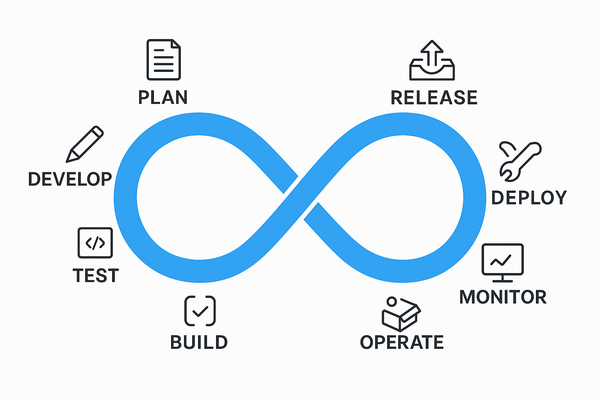As a DevOps engineer, your work doesn’t stop at CI/CD pipelines or writing infrastructure-as-code. You’re also a bridge between development, operations, and the underlying network that makes everything talk to each other.should know Ports and Protocols.
And here’s the truth: if you don’t understand the ports and protocols your systems rely on, troubleshooting production issues or securing them becomes a nightmare.
So let’s break down the networking essentials every DevOps engineer should know — the ports and protocols, and why they matter in your daily workflow.
1. Core Web and Application Protocols
These are the backbone of Application — if your app touches the internet, you’re using these.
| Protocol | Port | Transport | Why It Matters for DevOps |
|---|---|---|---|
| HTTP (Hypertext Transfer Protocol) | 80 | TCP | Handles unsecured web traffic. Typically used for redirects to HTTPS. Make sure your web servers (like Nginx or Apache) listen here only for redirection. |
| HTTPS (HTTP Secure) | 443 | TCP | Encrypts web communication using SSL/TLS. Ingress controllers, CDNs, and app servers must handle TLS certificates and termination correctly. |
| DNS (Domain Name System) | 53 | UDP/TCP | Resolves domain names to IPs. Misconfigured DNS can break deployments, service discovery, or even CI/CD pipelines. |
Always validate your DNS records and automate certificate renewals (using something like cert-manager in Kubernetes).
2. Infrastructure & Remote Access Protocols
You’ll use these daily for server management, deployments, and automation.
| Protocol | Port | Transport | Why It Matters |
|---|---|---|---|
| SSH (Secure Shell) | 22 | TCP | The lifeline for secure remote access to Linux/Unix servers and CI/CD agents. Best practice: Change the default port and restrict access via firewalls or security groups. |
| RDP (Remote Desktop Protocol) | 3389 | TCP | Used for graphical access to Windows servers. Even if you’re mostly cloud/Linux, it’s essential when managing Windows build agents or hybrid environments. |
Lock down SSH and RDP to specific IPs or use bastion hosts — never expose them directly to the internet.
3. Database & Messaging Protocols
If your app stores or moves data, these ports are the lifelines. They also happen to be common attack targets.
| Protocol | Port | Transport | Why It Matters |
|---|---|---|---|
| MySQL | 3306 | TCP | Standard for MySQL/MariaDB. Should never be publicly accessible allow only internal traffic. |
| PostgreSQL | 5432 | TCP | Popular open-source database. Same rule: restrict access tightly. |
| MongoDB | 27017 | TCP | Default MongoDB port. Enable authentication and firewall restrictions. |
| Redis | 6379 | TCP | Used for caching and session storage. Protect it — Redis often holds sensitive in-memory data. |
| MQTT | 1883 / 8883 (secure) | TCP | Common in IoT and microservice messaging. Know these if managing brokers like Mosquitto. |
Treat database ports like secrets — only your app should be talking to them.
4. Operational & Monitoring Ports
These keep your systems observable, automatable, and healthy.
| Tool / Service | Port | Transport | Why It Matters |
|---|---|---|---|
| Jenkins | 8080 | TCP | Default for Jenkins and many CI/CD tools. Watch for port conflicts in shared environments. |
| Prometheus | 9090 | TCP | Exposes metrics for scraping. Make sure Grafana or other dashboards can reach it. |
| Grafana | 3000 | TCP | Default web UI for visualization dashboards. |
| Kubernetes API Server | 6443 | TCP | The control plane’s main entry point. Lock it down with RBAC and network policies. |
| Health Checks | Varies (e.g., 8080/8081) | TCP | Used by Kubernetes or load balancers for readiness/liveness probes. Keep them lightweight and reliable. |
Ports Are Policy
Understanding ports isn’t just about memorizing numbers — it’s about enforcing good security and operational practices.
Here’s how to apply this knowledge:
- Principle of Least Privilege: Only open what’s absolutely necessary. Close everything else.
- Use FQDNs over IPs: DNS simplifies environment management and scaling — let names handle the routing.
- Audit Regularly: Tools like
ss,netstat, or Kuberneteskubectl port-forwardcan show you exactly what’s exposed. - Embrace HTTPS: Port 80 should exist only to redirect traffic to 443. Automate SSL/TLS renewal and rotation.
Final Thoughts
Networking isn’t just the concern of your infrastructure team .it’s part of your DevOps DNA. By mastering ports and protocols, you’re not just connecting services; you’re building reliable, secure, and scalable systems that stand strong under real-world traffic.
After all, every deployment travels across the network — make sure you understand the roads it takes
What’s Next?
The journey is ongoing. I’m glad to have you along for the ride.
- Follow our tutorials
- Explore more Dev+Ops engineer career guides
- Subscribe to InsightClouds for weekly updates
Devops tutorial :https://www.youtube.com/embed/6pdCcXEh-kw?si=c-aaCzvTeD2mH3Gv

Leave a Reply